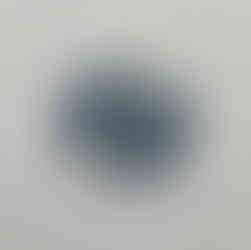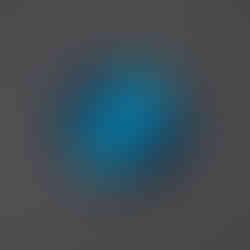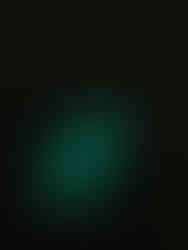FOCUS #1 - ORION Luminescent disc: A Breakthrough in the Watch Industry
- Mu:n
- Sep 11, 2024
- 4 min read
Updated: Nov 5, 2024
With the Orion series, we have fulfilled a promise made three years ago: to create a realistic, fully luminescent, relief Moon disk . This first in the sector is the result of a close collaboration that began in 2021 with the Swiss miniaturization workshop AJS Production .
The difficulty in producing such a piece lies in the material used: Super-Luminova®. This viscous substance makes any precision work extremely complex. Beyond its aesthetic aspect, the beauty of this Moon lies in the originality of its creation, a unique and innovative process that we delve into today.
In 2021, a first album was released with the ARTEMIS I project.
The ARTEMIS project initiated in 2021 sees the emergence of a new idea, a strong demand from our young community: to develop a fully realistic moon. Following initial tests in simple printing (decal) or 3D (material deposition) with generic workshops, the results are far from satisfactory. We were then invited to meet with the AJS Production workshop, located in Porrentruy (Switzerland).
Welcomed by its director, Anthony SAUNIER, we discovered a fully equipped workshop specializing in the miniaturization of watch components. Already collaborating with leading brands, the workshop had recently won the Grand Prix des Exposants in Geneva for its new, patented laser printing method.
The workshop agrees to support the Mu:n Projects in this new technical challenge . After many discussions, However, the idea of a luminescent moon was ruled out due to the complexity of working with the material. The Creators series was then born in 2022. You can learn more about the manufacturing method of this series in the dedicated article: The manufacture of a realistic moon .

In 2023, the R&D team accepts the challenge of a luminescent moon - the Orion project is born.
Following the success of the first edition, the end of 2023 begins with a new challenge: the revival of a luminescent Moon. After some reluctance, Howel, head of R&D within the workshop, accepts the challenge.
We then sent initial sketches to the research department. These were based on a faithful representation of the Moon and the Milky Way, while integrating partial luminescence. Several tests were conducted to refine the size of the stars, the luminous halos, as well as the thickness of the materials. Various processes, such as decaling, Japanese luminescent paint and the use of composite materials, were then explored.
Despite these numerous attempts, none of the initial results met our expectations. The starry night was blurry, smeared, with few stars visible. Moreover, the luminescence was too intense in the undercoat, illuminating the entire disk. Finally, the representation of the Moon was seriously lacking in relief at night, giving the impression of a flat, randomly grayed, and unrealistic surface.
In January 2024, a new approach was proposed to the teams.
As development stalled, a new method was suggested in the first quarter of 2024. The idea involved applying a BGW9 luminescent sticker as a base layer on a 0.2 mm raw disk. This thicker base would be able to resist burning, decaling, and drilling. Multiple layers of paint could then be applied, using successive decals.
To work these different layers of material, the team favored the use of the femto laser, capable of both engraving and blackening the material with micron precision (0.001 millimeter). This laser, operating at a frequency of 10⁻¹⁵ seconds, digs and burns the different layers of paint with variable intensity . The material is thus delicately removed at different places, until it reaches the Luminova. This method creates a depth effect, maintaining a realistic appearance while making certain parts luminescent. The difficulty lies in the exact quantity of material to remove and burn. This technique, having never been carried out before, therefore requires series tests to understand and test the reaction of the material. Around ten discs were thus produced before finding the ideal depth.
In the spring of 2024, the first conclusive results are achieved, with a notable success on the Moon . Indeed, each crater stands out in relief, with slightly grayish and bluish nuances on the upper surfaces. This preserves a faithful representation of the star. Only the night is still missing, with a barely perceptible Milky Way, sporadic luminova smudges, a nocturnal starry night to be reviewed in its design, as well as too much depth on the links between the constellation ORION.
In the summer of 2024, the result is striking.
In the new tests, the goal was to bring more nuance to the Milky Way with a more subtle blue gradient. The design was then completely redone to allow the CNC machines to work the material differently, and to offer a more visually present starry night.
Moreover, this new one presents this time an exact mapping of the night sky, precise to 0.001 mm, and faithfully reproduces the position of each star around the constellation of Orion. In the dark, the constellations light up around Orion: Taurus, Auriga, Gemini, Monoceros, Lepus, Eridanus, and Canis Major.
While the Milky Way has gained in precision, with nuances and a striking level of detail, the Moon, on the other hand, has slightly lost its splendor. The craters are less pronounced, and the relief lacks depth. We have therefore started our fifth and final prototype phase, to keep the best of the two previous versions.
The new Orion series features a unique piece, the culmination of two years of development. Through this innovative approach, AJS will once again leave its mark on the watchmaking sector with its boldness and expertise. A huge thanks to Howel, Jérôme, Anthony, and the entire technical team for taking on this ambitious challenge and bringing this luminescent Moon disk to life.



























Комментарии